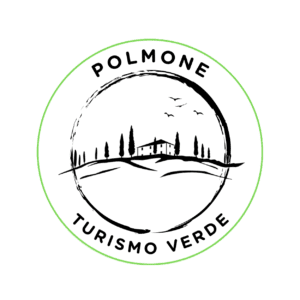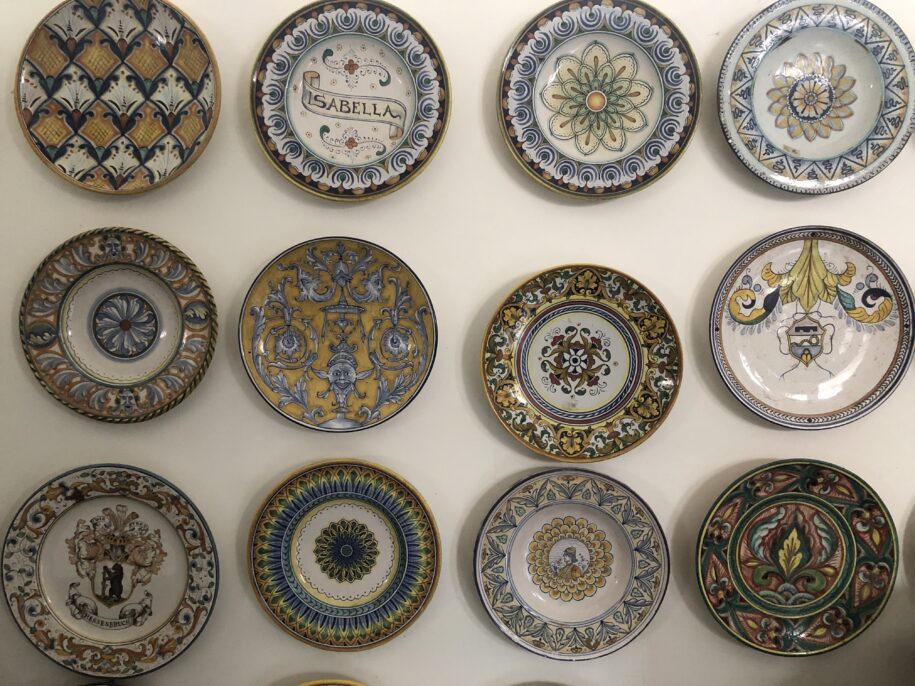The region around Deruta and the Tiber Valley is truly a paradise for lovers of maiolica ceramics and terracotta. Over the centuries, potters in Deruta have developed a range of techniques to create their beautiful ceramics.
This development, experienced from the early Middle Ages onwards, into an important centre for ceramic production can be attributed to a number of factors:
The region around Deruta possessed high-quality river clay deposits of excellent quality which lent themselves perfectly to making beautiful, durable products.
Deruta's location on the Tiber, once an important trade route, made it possible to easily distribute the ceramics produced to other parts of Italy, and even abroad.
The inhabitants of Deruta had a long tradition of handicrafts and crafts. This knowledge and skills were passed on from generation to generation, creating a skilled workforce. The ceramists around Deruta were not only skilled, but also very creative. They developed or adopted new decoration techniques and styles, making Deruta ceramics known worldwide.
In the 16th century, Deruta sided with the Roman Catholic Church during the Salt War. As a reward, the city was rewarded with a tax dispensation, giving a huge boost to ceramics production. This gave artisans the time and resources to perfect their craft and develop new techniques.
In addition, the ceramics of Deruta and the Tiber valley are also a great example of how cultural exchange and historical events can influence art.
Arab and Moorish influences on techniques and motifs
The Arabs introduced advanced ceramic techniques to Europe during their presence in the Iberian Peninsula (early Middle Ages), such as the use of tin oxide to create white glazes, and the application of complex geometric patterns. These techniques were adopted by Italian potters, via Sicily, and further developed.
Moorish art, with its rich ornaments and geometric patterns, had a great influence on the decoration of Deruta ceramics. We can see this in the motifs used, such as stars, flowers and arabesques.


Italian influences: The Renaissance and local traditions
The Italian Renaissance had a huge impact on art in general, and thus also on ceramics. Emphasis was placed on realism, perspective and classical motifs. The potters of Deruta started making more naturalistic representations, such as landscapes and figures.
Besides foreign influences, local traditions also played an important role. Farmers and the countryside provided inspiration for many of the representations on the ceramics, including animals, plants and scenes from everyday life.
The way all these different influences are fused together, which is unique to Deruta, is what makes their maiolica so distinctive. The result is rich and varied ceramics that are both traditional and innovative.
Features of the Deruta maiolica ceramic summarised:
Deruta maiolica is known for its bright and vibrant colours, such as blue, green, yellow and orange. The decorations are often highly detailed and can be either geometric or naturalistic. Many of their ceramics have religious motifs, such as depictions of saints and biblical scenes.
Besides religious motifs, landscapes and figures, such as farmers, shepherds and animals, are often depicted.
Techniques of the Derutan potters
As mentioned above, potters used high-quality local clay. This was carefully prepared by mixing it with water to remove impurities and air bubbles. The clay was then shaped on the potter's wheel. For larger or more complex shapes, casting or modelling techniques were used.
A feature of Derutan maiolica ceramics is the use of tin oxide glazes. Adding tin oxide to glazes created a white, opaque glaze on which decorations stood out beautifully. To obtain the characteristic colours (mainly yellow. blue and orange-red), colour pigments were added to the glazes, These were made from natural raw materials such as copper, cobalt and manganese.


Fine brushes were used to apply the designs to the still unfired glaze. Stamps and stencils were also used to apply patterns and motifs.
For an extra shiny finish, lustre glazes were sometimes used. These glazes contained metals such as silver or copper, which caused an iridescent sheen when fired. Luster ceramics were therefore very expensive.
Another technique is 'reserving'. In the reserving technique, part of the glaze is scratched away with a sharp object, leaving the underlying clay visible.
Another technique is 'reserving'. In the reserving technique, part of the glaze is scratched away with a sharp object, leaving the underlying clay visible.
Ceramics used to be fired in kilns fired with wood. The temperature in the kiln could reach up to 1,000 degrees Celsius. The firing process thereby consisted of several phases, in which the temperature was slowly raised and lowered. Nowadays, ceramists use huge electric kilns, which can hold several large pieces as well.
While maiolica from Deruta is known for its vibrant colours and detailed decorations, terracotta stands out for its natural beauty and warmth. Both materials have their own unique charm and are appreciated for different reasons.

What is terracotta?
Terracotta, literally 'baked earth', is a porous pottery made by firing clay at high temperatures (between 900 and 1100 degrees). The result is a material with a characteristic red/orange colour, created by iron particles in the clay coming into contact with oxygen. It is mainly undecorated and unglazed, and sometimes has simple, hand-formed decorations. Terracotta is traditionally used for functional objects such as pots, pans, floor tiles and plant pots. Maiolica ceramics are often used for decorative objects such as vases, bowls and wall tiles.
Terracotta has timeless appeal and is appreciated for its natural beauty, warmth and durability. The material is porous, allowing it to absorb and release moisture, making it ideal for planting. In addition, terracotta is very strong and durable, allowing it to last for generations.
Most of the terracotta factories in and around Deruta specialise in producing "antique" terracotta. Vases, amphorae and pots with shapes and motifs as they have been made for centuries in central Italy. These little factories usually also have a small shop next to the workshop where you can find a huge selection of objects for a favourable price. It's often no problem if you want to take a look around the workshop.
Visiting the makers
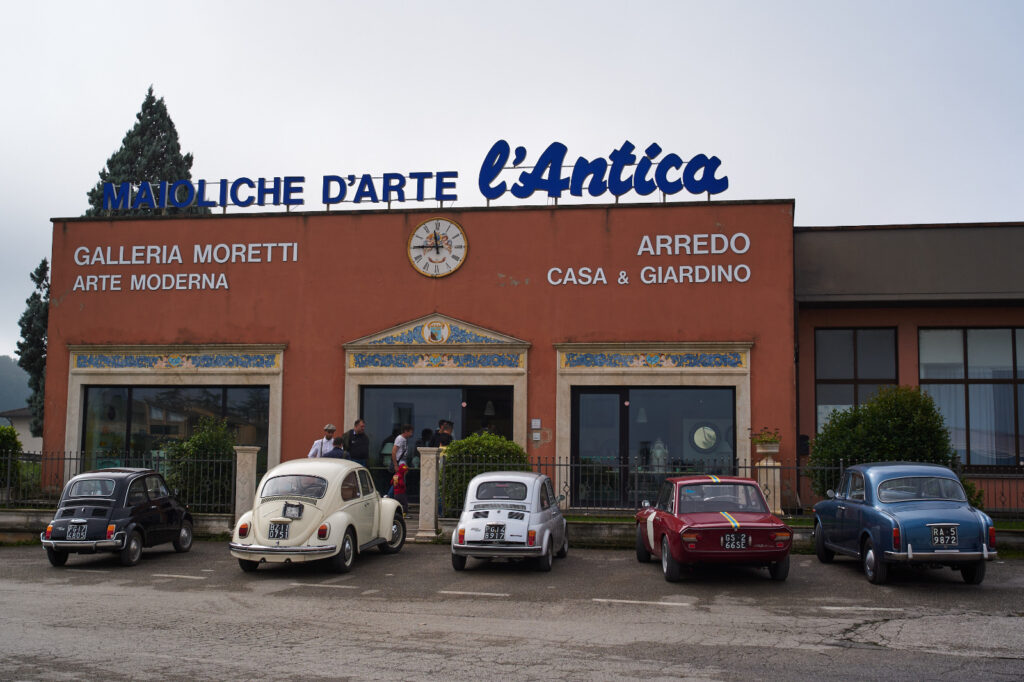
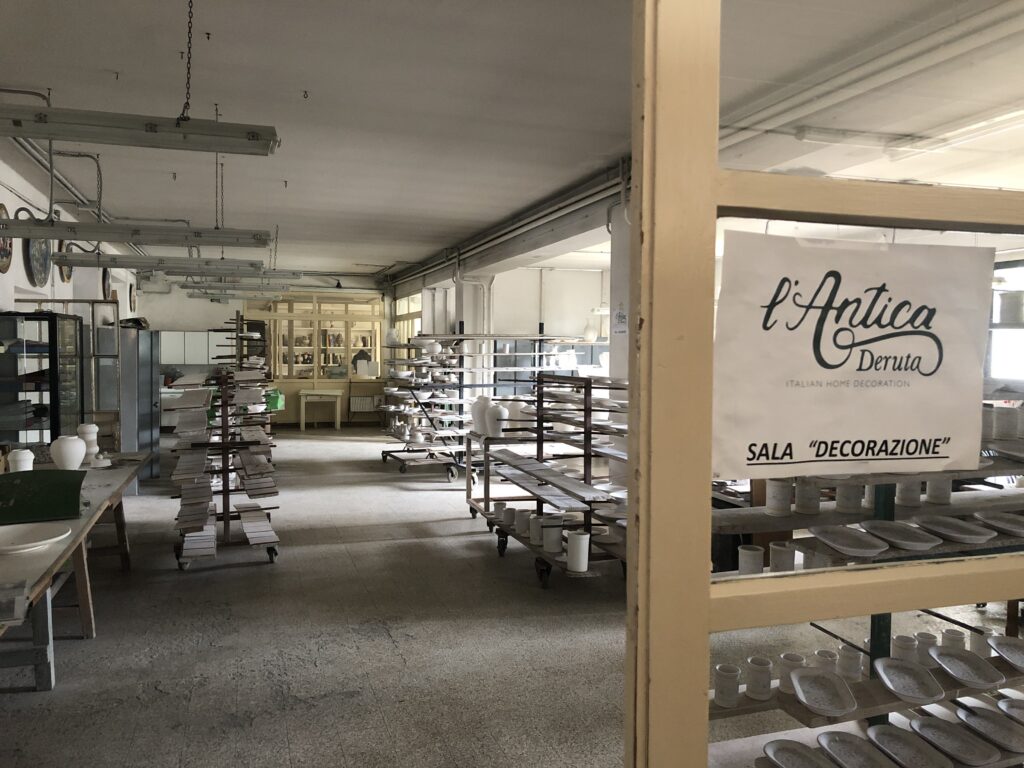
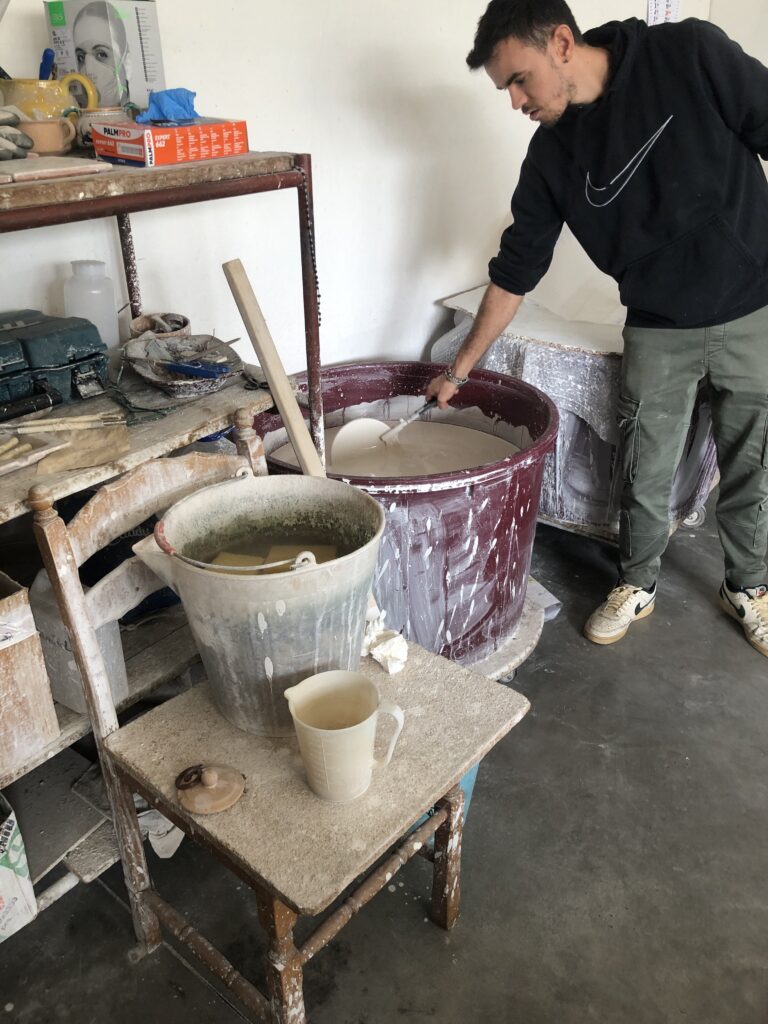
In October this year, we visited one of the leading maiolica companies in Deruta ourselves, "l'Antica". Behind the huge shop with showroom is the workshop where we were given a guided tour with demonstration in a small group. There was a very calm atmosphere, despite the fact that it is still a factory. There were enormous racks with all kinds and shapes of ceramics, in several stages of production. What stood out was that really everything was still glazed and painted by hand. Each plate is individually dipped in a glaze bath and then laid out to dry. The objects then go to the painting workshop where they are individually decorated. This method also allows for customisation and unique pieces.
It's funny to see that the pigments used take on a completely different colour through firing. Lilac becomes orange, grey becomes blue, and so on. There was a section where all the available colours were hanging so that it was easy to determine which pigment ends up getting which colour.
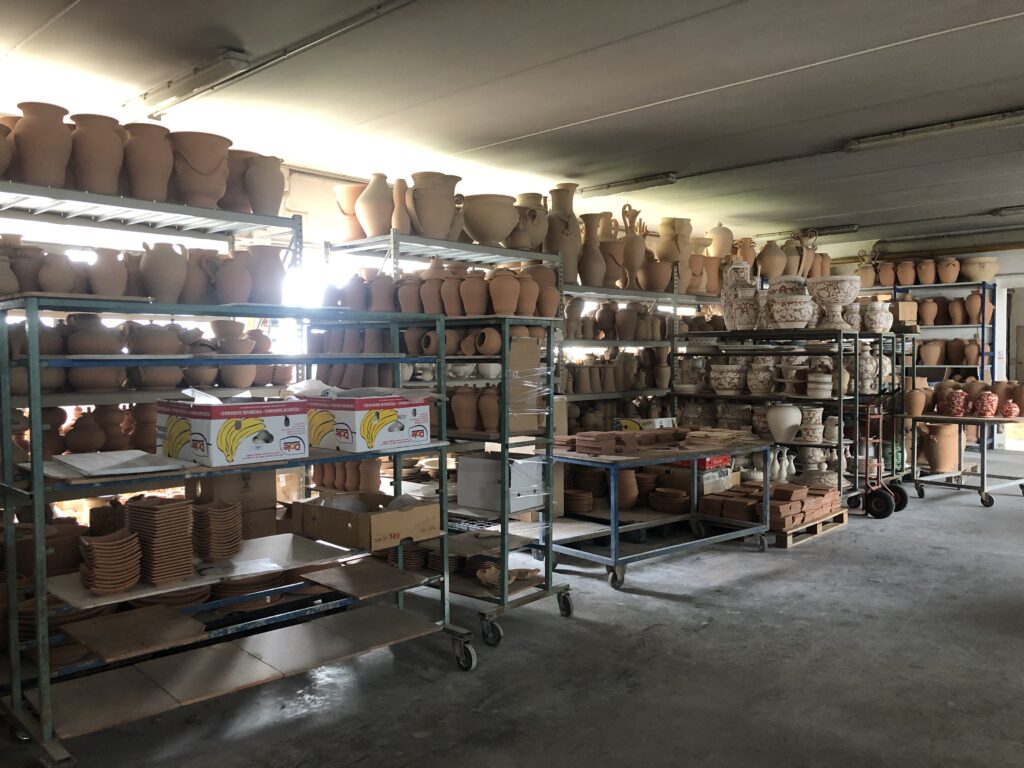
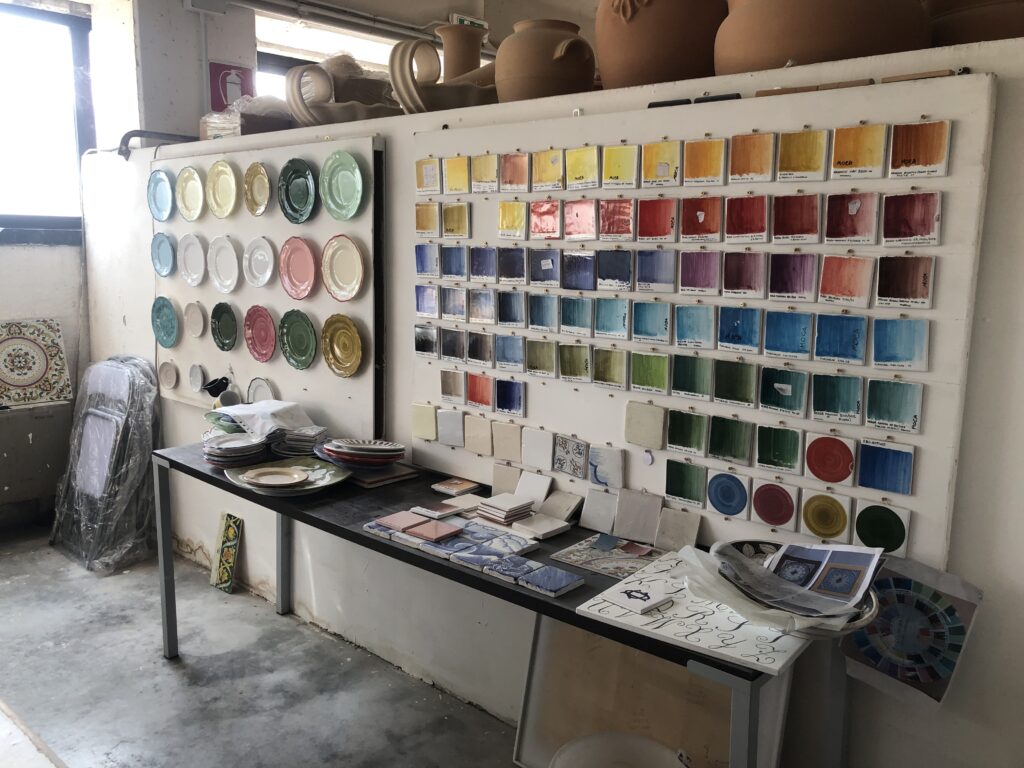
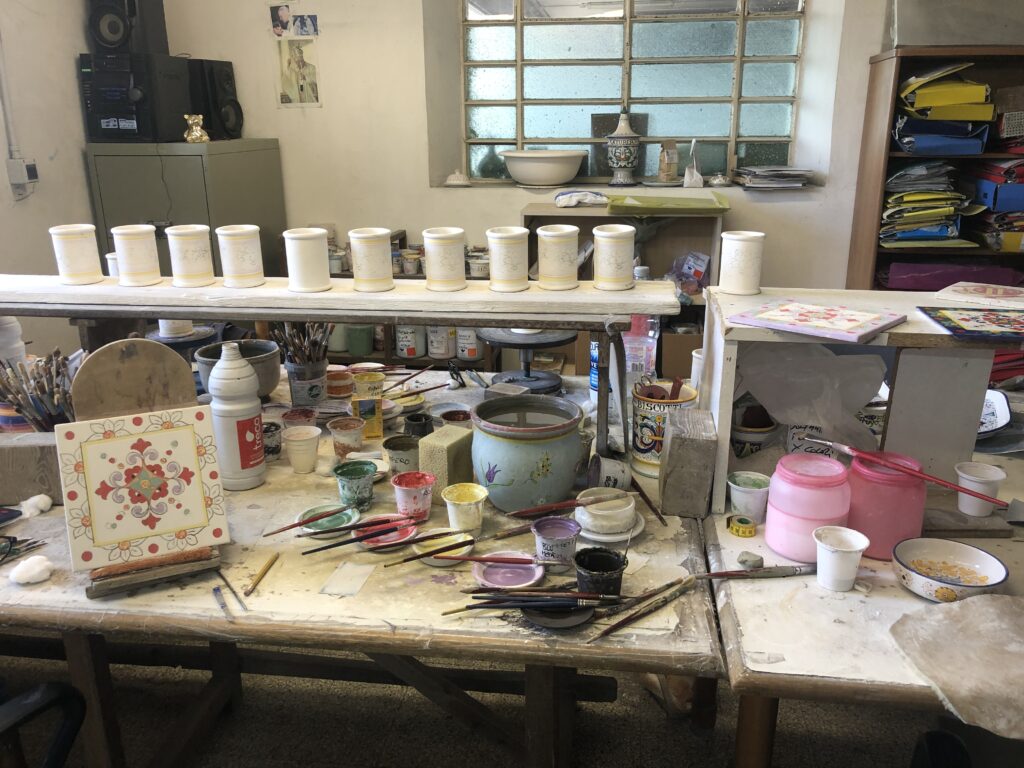
There are several such factories in Deruta, and our guests returned last year with nice stories and also personalised objects.
At FIMA Maioliche for example, you can have crockery painted in traditional style, with any text you want on it. You can also choose the colours you want. A Dutch family staying with us for a few weeks had the nice idea of having a "family service" made, as a memento of their holiday in Umbria. They went there halfway through their holiday with us, and were able to pick up the beautifully done crockery after only 5 days.
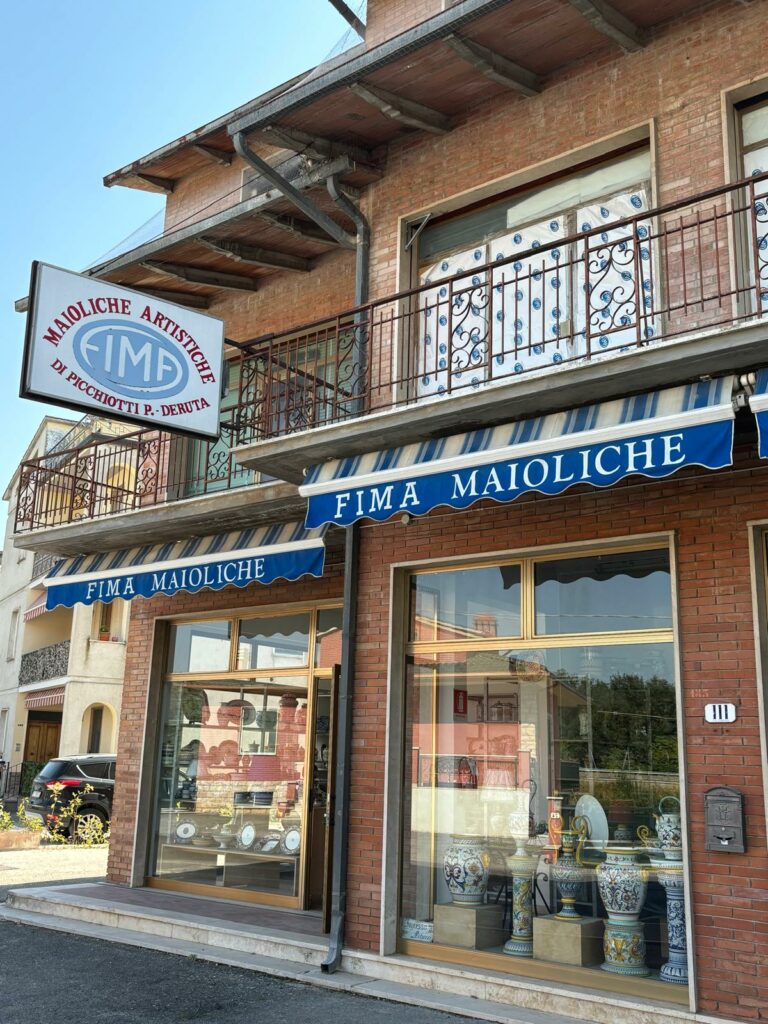
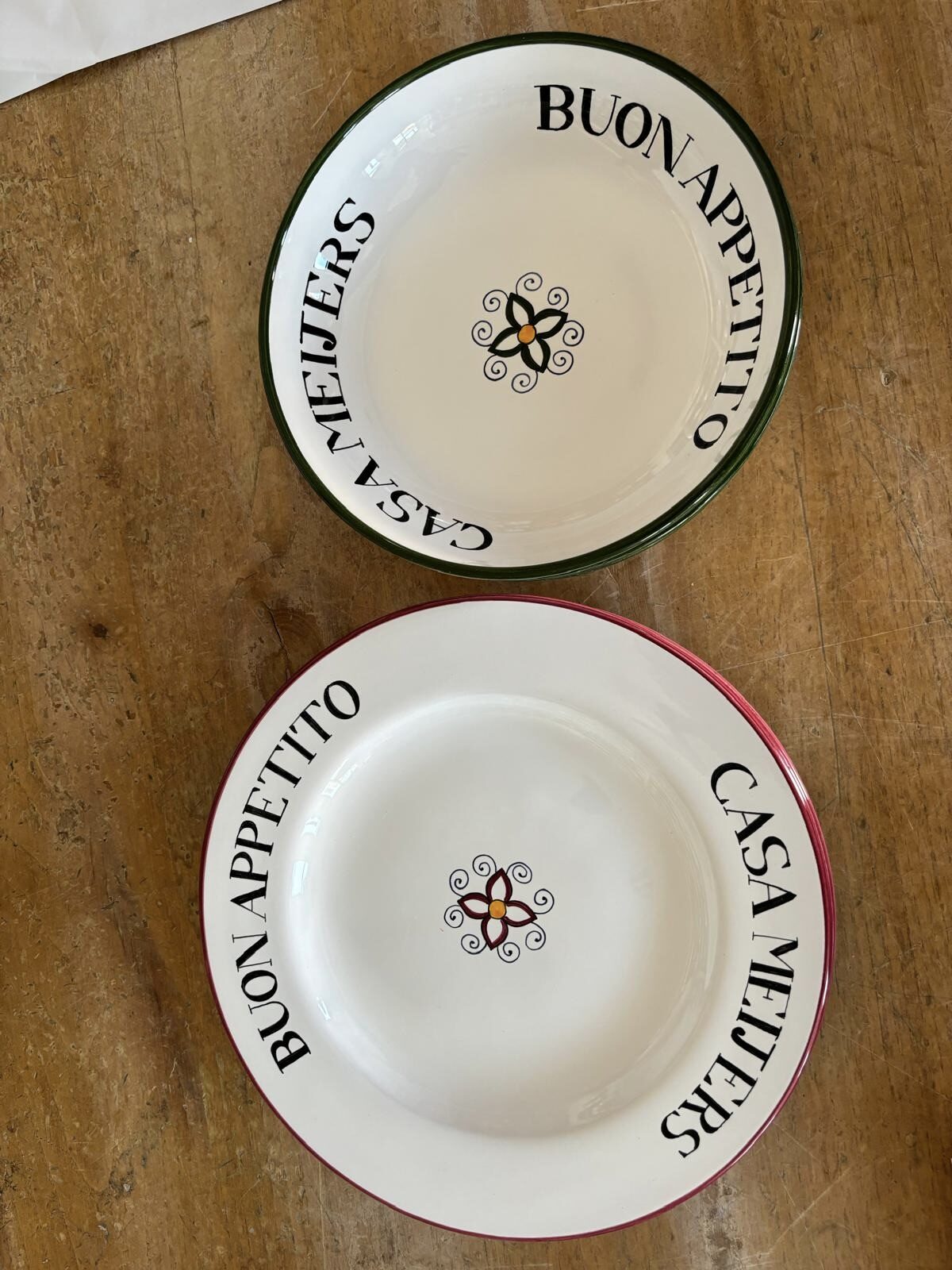
If you want, you can also be a bit of a potter yourself; they let you mess around with clay and pigments (including the little ones). You can then try to make an object (e.g. a carafe), of which you will eventually get a neat copy. It's all about participating in the whole process from lump of clay to glazed object.
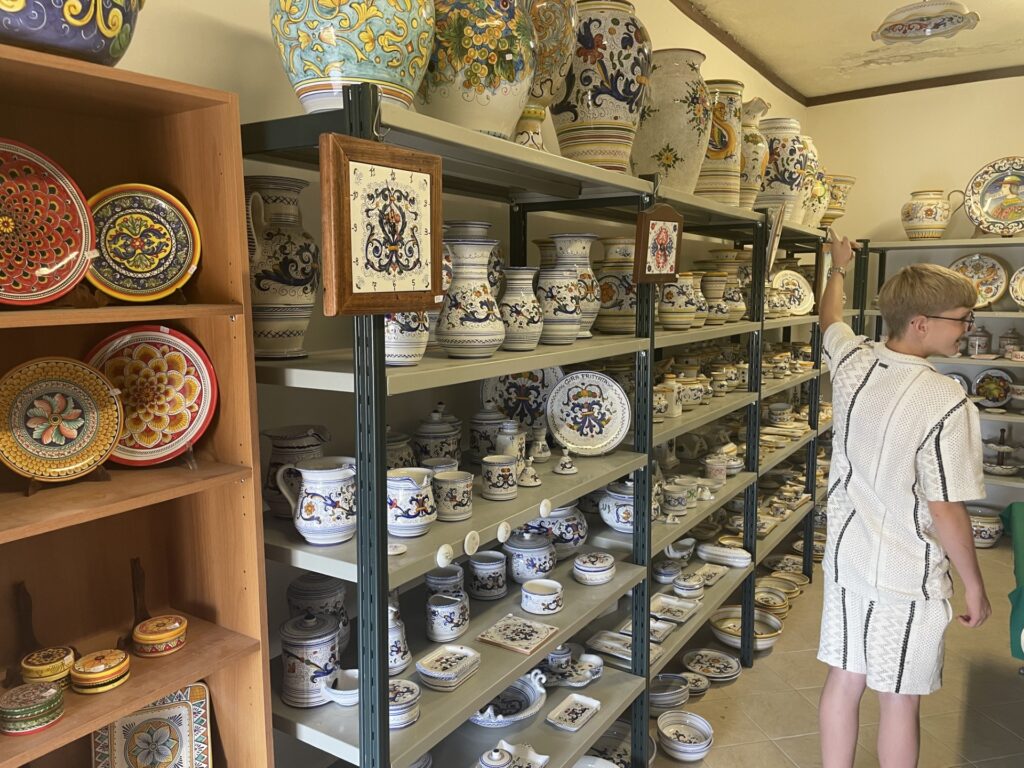
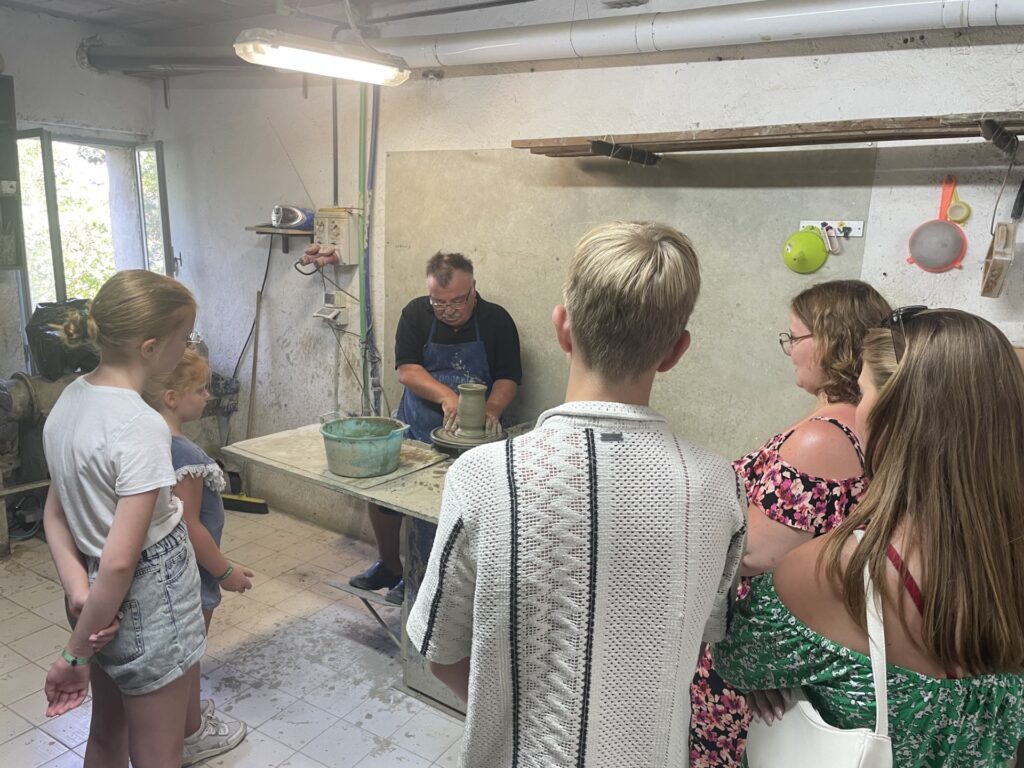
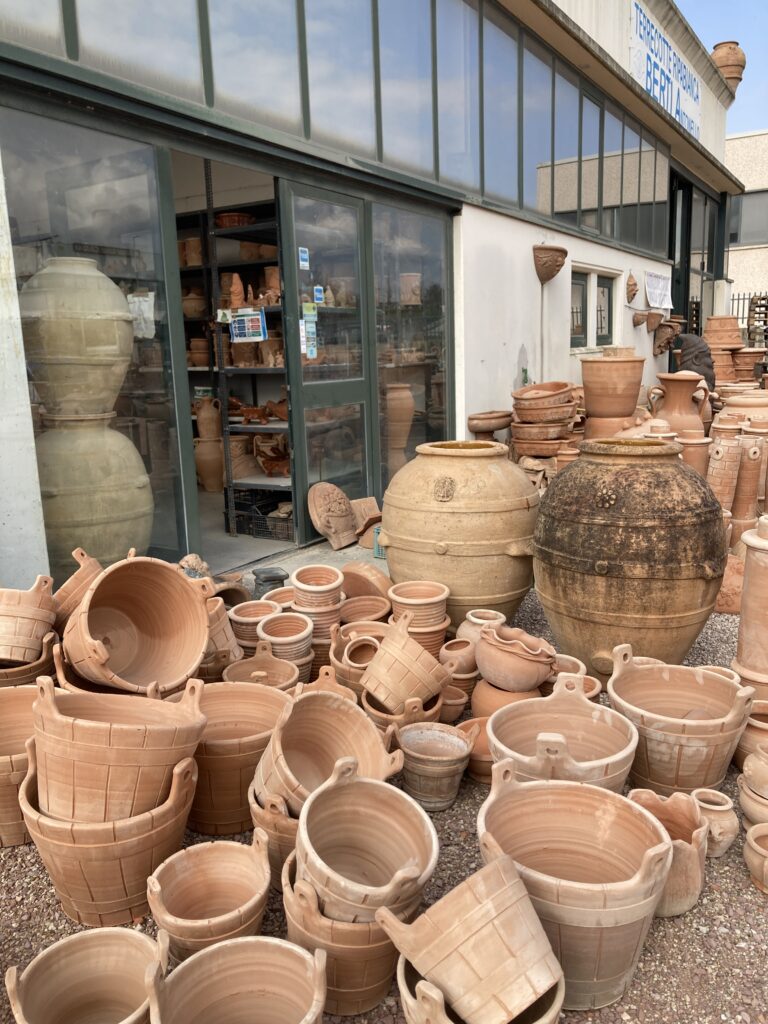
If you'd rather go for real Umbrian terracotta, we'd suggest you Berti Terrecotte in Ripabianca (just before Deruta). They make unusual terracotta pots and vases, in traditional style, and ship them all over Europe. They also design unique pieces on commission for whoever wants them.
In the grounds around the little factory are the most fantastic containers, vases, pots and amphorae. The choice is vast, and the prices are very sympathetic. You can always take a look in the workshop: the owner is a giant of a man, and you can see how he shapes even the largest objects with his huge hands.
Almost all the terracotta here at Polmone comes from there. We have already driven there twice with a trailer to get our fix! You can never have enough of beautiful traditional pots and containers around the house.
